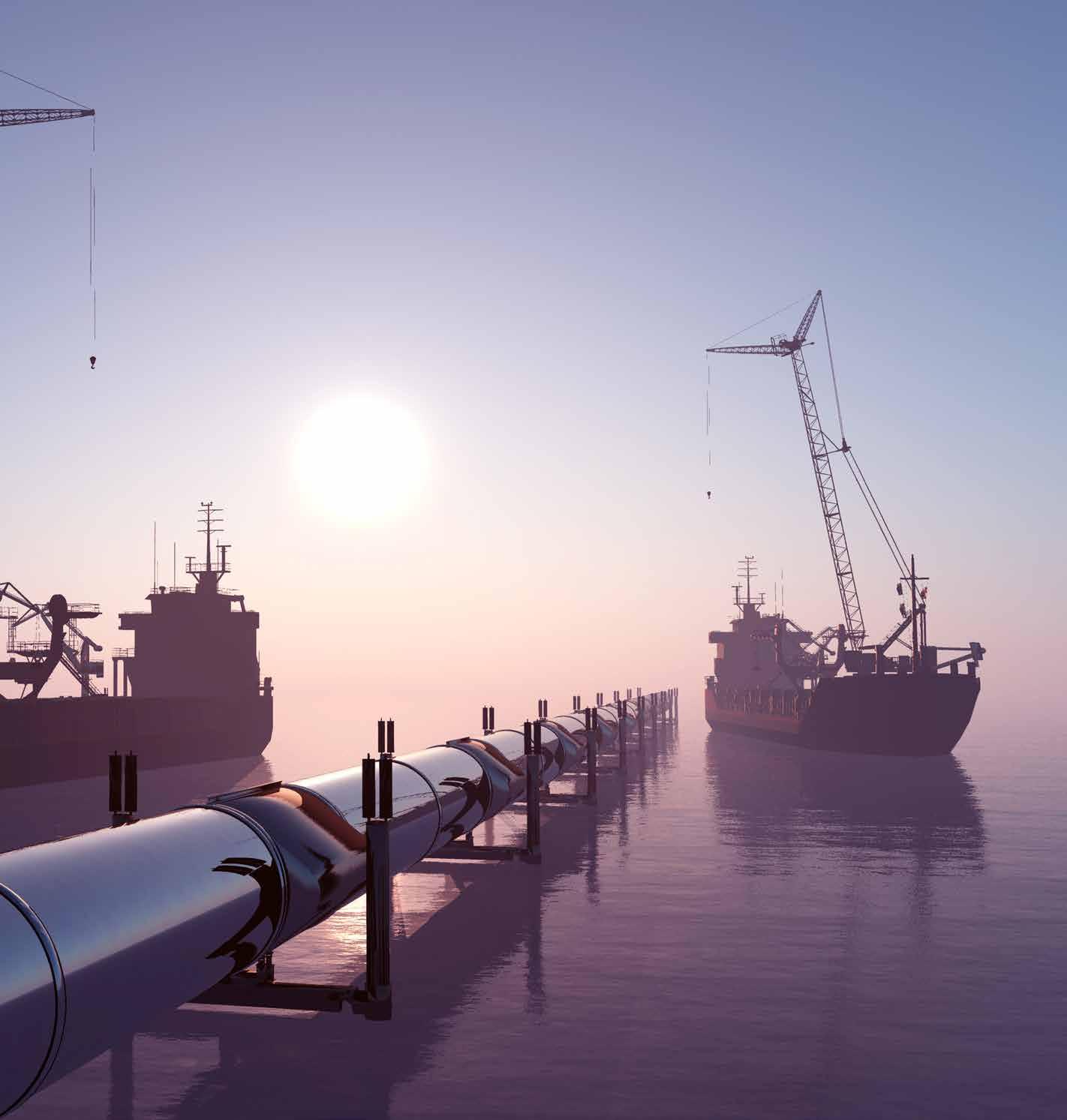I N DEGYPT U S T RYUPDATES INSIGHTS
ENHANCING INFRASTRUCTURE
FOR DEEP WATER GAS PIPELINES
BY RANA AL KADY
W
ith natural gas becoming a topic of increasing interest, it is only expected that the infrastructure is revised and/or enhanced to further develop new projects. In fact, the Ministry of Petroleum and Mineral Resources (MoP) aims to expand the capacity of national gas grid over the coming years. Already, Egypt has successfully managed to increase the total grid length by 4,820 km over the course of 23 years. However, with Egypt striving further to be the region’s natural gas hub, it is important to ensure that the technical elements of pipelines – especially deep water pipelines – are at their prime capacities too.
GENERAL OVERVIEW OF THE CONVENTIONAL INFRASTRUCTURE Before assessing the ways in which deep water pipelines could be improved, it is important to consider the technical elements of the existing typical infrastructure available for natural gas pipelines.In the oil and gas industry, there are various metal and non-metal pipe materials used to transport natural gas as well as other petroleum products. Typically, metal pipes consist of steel (or more specifically, black steel), copper, brass, or even Corrugated Stainless Steel Tubing (CSST). However, copper is not usually allowed due to the high hydrogen sulfide level that could eventually ruin the interior lining of the pipe. As for non-metal materials, typically, Polyethylene (PE) pipelines are used for natural gas applications as they are corrosion resistant as well as abrasion resistant. One of the main weaknesses of PE pipelines is that the material could deteriorate when exposed to sunlight, giving it an advantage in deep water applications. At the moment, there are several challenges in the infrastructure design of natural gas pipelines, especially deep water pipelines. This is due to the high external pressures surrounding the pipelines. Usually, deep water pipelines consist of extra material to create a thicker pipe lining as a result of increasing pressure levels the deeper the pipeline is located. Also, the tension capacity puts a limit on the depth that the pipelines could be laid underwater. In fact, 22
EGYPT OIL & GAS NEWSPAPER
conventional steel pipelines can only be placed at a maximum of a 3,000m depth. Additionally, there is a concern of pipeline freezing or delayed flow of natural gas through pipelines with a surrounding water temperature below 0f Celcius. Additionally, from an environmental perspective, there is a huge concern over the potential for natural gas leakage at low sea levels, which would be difficult to avoid and even more complicated to repair in the case of an accident. These are some examples of the challenges faced with conventional deep water pipeline infrastructure.
ENHANCING INFRASTRUCTURE It is essential to consider that the deep water gas pipelines could be improved from a technical perspective through the application of new and innovative technologies. For example, the application of reinforced thermoplastic composite pipelines is becoming more and more common among deep water projects. In fact, these reinforced thermoplastic composite pipelines are considered to be a high performance material incorporated within the material mix rather than used as an epoxy between pipe sections; this further strengthens the pipe and prevents collapses from occurring. Consequently, one of the more impressive solutions is that of diverless technologies. Diverless technologies offer a remote solution for quick access





